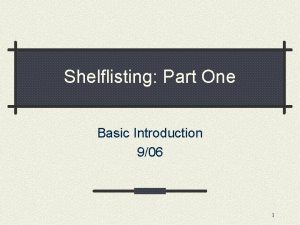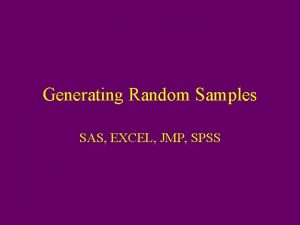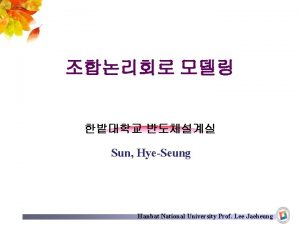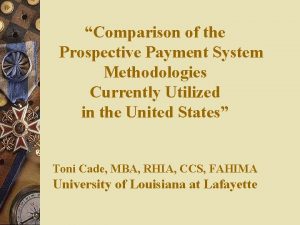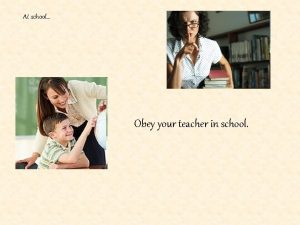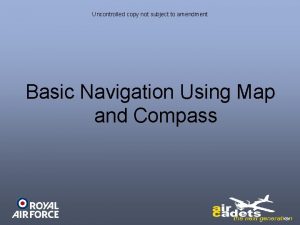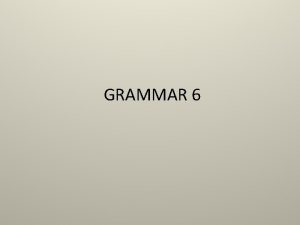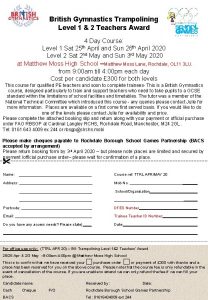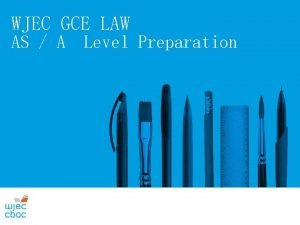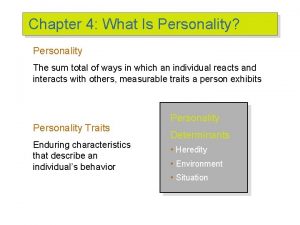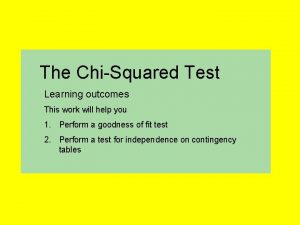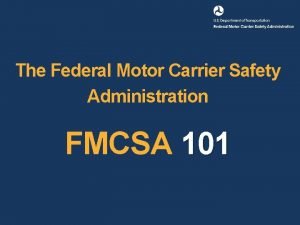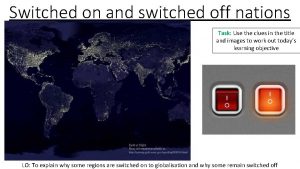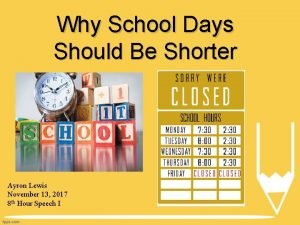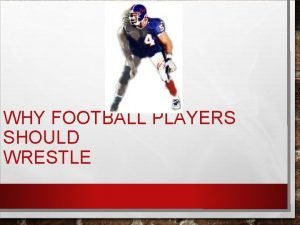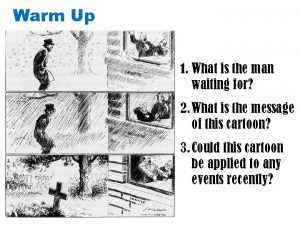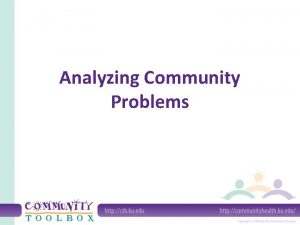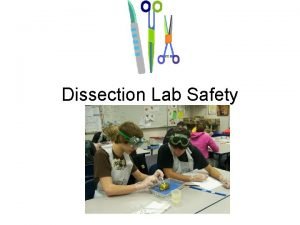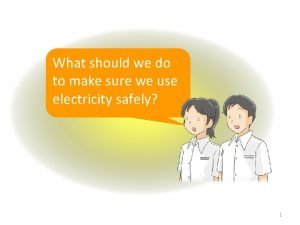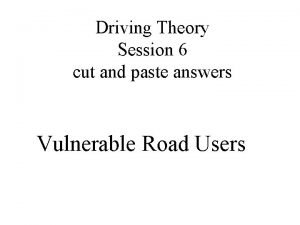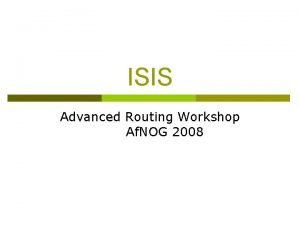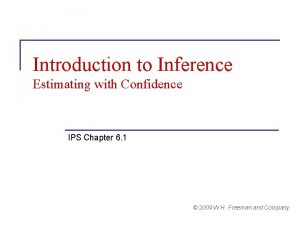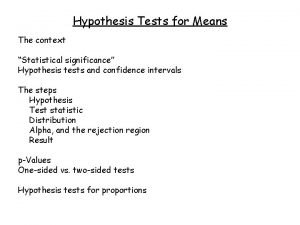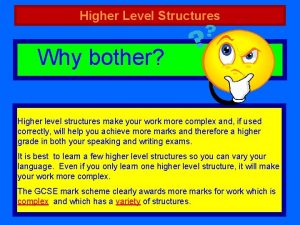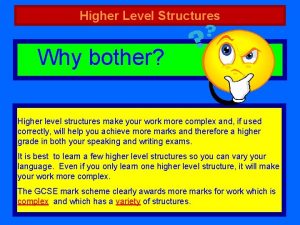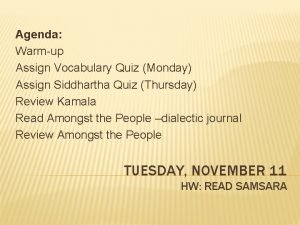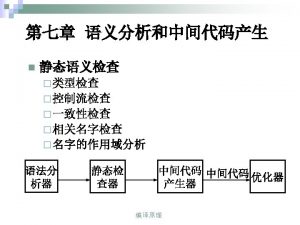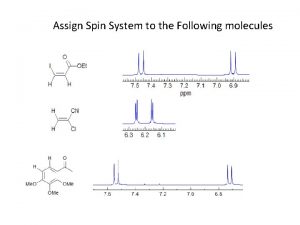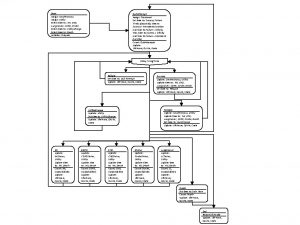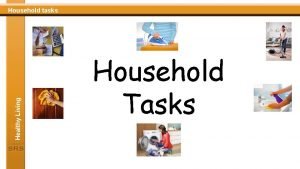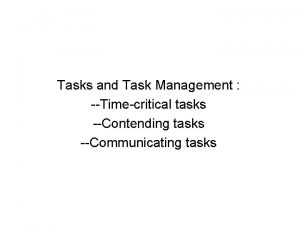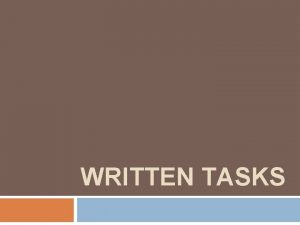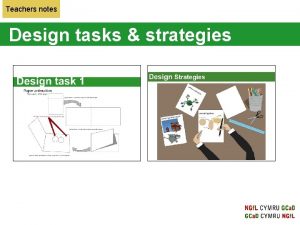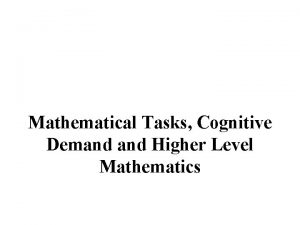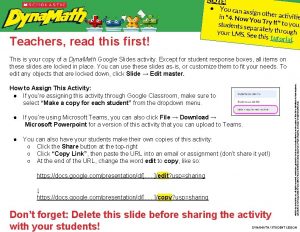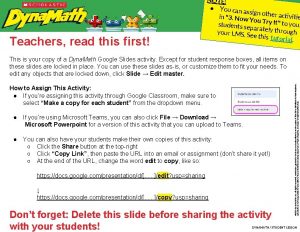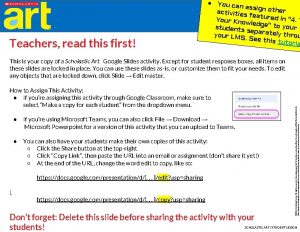Why Should Teachers Assign Higher Level Tasks North















































- Slides: 47

Why Should Teachers Assign Higher Level Tasks? North Carolina State University Student Teachers Fall 2010

NCTM Problem Solving Principals • • Instructional programs from prekindergarten through grade 12 should enable all students to— build new mathematical knowledge through problem solving; solve problems that arise in mathematics and in other contexts; apply and adapt a variety of appropriate strategies to solve problems; monitor and reflect on the process of mathematical problem solving.

NCTM Communication Principal • • Instructional programs from prekindergarten through grade 12 should enable all students to— organize and consolidate their mathematical thinking through communication; communicate their mathematical thinking coherently and clearly to peers, teachers, and others; analyze and evaluate the mathematical thinking and strategies of others; use the language of mathematics to express mathematical ideas precisely.

Common Core Standards • Make sense of problems and persevere in solving them. • Reason abstractly and quantitatively. • Model in mathematics. • Look for and make use of structure.

Types of Tasks • Novice – skill/procedural knowledge • Apprentice – performance assessments • Expert – multi-day/complex/portfolio

Types of Mathematics Tasks Stein, Smith, Henningsen, & Silver, 2009 Low-Level Demands Higher-Level Demands Memorization Tasks Examples: Recall or Memorizing facts, rules or definitions Task follows a specified reproduction of work Procedures with Connections Tasks Examples: Focused on the use of the procedure to develop the “sense of the concept” Student must engage in the “idea” to make sense of the problem Procedures without Connections Tasks Examples: Algorithms Focused on the procedure/correct answer Requires only limited cognitive demand Doing Mathematics Tasks Examples: Requires in-depth, conceptual thinking Requires students to rely on experiences and previous knowledge to develop an answer

Depth of Knowledge • • Level 1 -Recall Level 2 -Basic Application of Skill/Concept Level 3 -Strategic Thinking Level 4 -Extended Thinking

Mathematical Tasks • What is cognitive demand? – Focus is on the sort of student thinking required. • Kinds of thinking required: – Memorization – Procedures without Connections • Requires little or no understanding of concepts or relationships. – Procedures with Connections • Requires some understanding of the “how” or “why” of the procedure. – Doing Mathematics

Examples of Mathematical Tasks Level 1 • Memorization Which of these shows the identity property of multiplication? A) a x b = b x a B) a x 1 = a C) a + 0 = a • Procedures without Connections Write and solve a proportion for each of these: A) 17 is what percent of 68? B) 21 is 30% of what number? • Too much of a focus on lower level tasks discourages student “involvement” in learning mathematics.

Examples of Mathematical Tasks Level 2 • Procedures with Connections Solve by factoring: x 2 – 7 x + 12 = 0 Explain how the factors of the equation relate to the roots of the equation. Use this information to draw a sketch of the graph of the function f(x) = x 2 – 7 x + 12. • Doing Mathematics Describe a situation that could be modeled with the equation y = 2 x + 5, then make a graph to represent the model. Explain how the situation, equation, and graph are interrelated. • Higher level tasks, when well-implemented, promote “involvement” in learning mathematics.

Characteristics of Higher Level Tasks Higher-level tasks require students to… do more than computation. extend prior knowledge to explore unfamiliar tasks and situations. use a variety of means (models, drawings, graphs, concrete materials, etc…) to represent phenomena. look for patterns and relationships and check their results against existing knowledge. make predictions, estimations and/or hypotheses and devise means for testing them. demonstrate and deepen their understanding of mathematical concepts and relationships.

Traditional Problem Nicole’s Carpeting Task Nicole was redecorating her house. She has decided to recarpet her bedroom, which is 15 feet long and 10 feet wide. How many square feet of carpeting will she need to purchase?

Advanced Problem Nicole’s Carpeting Problem Nicole wants to redecorate her bedroom. She decides to recarpet. If her room is 5 feet longer than it is wide, write an equation to represent the area of her room. If you know her room is 10 feet wide, how many square feet of carpet will she need? If the carpet is sold by the square yard, how many square yards will she need?

Requirements for the Estimation Center • Engaging and creative. • Students can work independently. • Makes a connection to real-world or practical applications. • Encourages thoughtful classroom discussion. • Uses digital cameras and other multimedia tools. • Presented in a power point presentation. • Includes the title of the estimation center, mathematical concepts and connections addressed, and materials and set-up needed • All sources are cited • Worksheet for students to use • Grading rubric for students’ submissions

Implementing the Estimation Center • Students must make use of a wide variety of problem solving skills • Students are required to write a thorough description/explanation of the techniques used while attempting to solve the problem • These explanations form a basis for classroom discussion, with the main focus being on process and strategies, not on the final answer

Discussion • Results of the estimations are discussed, not to determine who got the answer “right”, but as an examination of effective strategies • The thoroughness of the various approaches and the clarity of the written summaries are also discussed. Although a definite answer may not be possible, some strategies may yield more accurate results than others. • The class data can be reviewed to determine what generalizations and assessments can be made about the problem. The class helps answer the question, “What did we learn from the activity? ”

Estimation Center Mr. Wonka’s Dilemma – An Estimation Center • Mathematical Concepts addressed: – – • Estimation Exponents Area Volume Mathematical Connections addressed: – Connections between area and volume – Connection between area formula, volume formula and exponents • Materials and equipment needed: – – – – • Estimation Center Power Point Student worksheet Calculator Pencil LCD Projector White Board Gobstoppers Set up needed: – Students can either work independently or in pairs – Computer, LCD projector and board at front of room so that all students can see the estimation center – Access to a computer and internet – Access to the library

An Estimation Center Megan Coates Cherelle Cole

The Background • Willy Wonka and his candy factory have been doing quite well ever since the invention of the everlasting gobstopper. Kids from all over the world come to the factory just to see if they can get a glimpse of the everlasting gobstopper machine!

• There is such a demand for the everlasting gobstoppers that Mr. Wonka has to put the gobstopper producing machine on overdrive for days!

The Dilemma • But oh no!!!! The machine can’t keep up with the demand goes haywire! The machine explodes and there are everlasting gobstoppers spewing everywhere! The entire floor of the everlasting gobstopper room is covered by gobstoppers! The area of the floor of the room is the size of two and a half football fields.

The Challenge • Mr. Wonka has to clean up the mess and he needs your help to determine how many gobstoppers are littered all over the floor! He also needs your help to determine how big of a candy dispensing machine he needs to store the displaced gobstoppers.

• Can you take on this honorary task? The rewards are great!

Remember…. . • Be sure to explain your process and show all work. Mr. Wonka will not be able to reward you if no work is shown. Be prepared to discuss your findings and explain how you came to your conclusions since Mr. Wonka may need to employ your method if something like this ever happens again.

Sources • http: //www. grubbyhalogallery. com/mklacy/g allery/theatre_sets/images/P 1010216. large. jp g • http: //picsdigger. com/image/176 d 7 fdf/ • http: //steelkaleidoscopes. typepad. com/steel_ kaleidoscopes/2007/09/the-everlasting. html • http: //rubistar. 4 teachers. org

• • • Possible Solution Area of floor: Size of 2 and a half foot ball fields The American football field is approximately 120 yards long by 53. 3 yards wide. The area of one foot ball field is approximately The area of the floor of the Gobstopper room is approximately Figure out how many gobstoppers fit in one square inch, foot, etc. – • Convert units to find out how many gobstoppers are in one square yard. (This is not the only conversion possible). – – – • I will convert feet to yards. There are 3 feet in one yard. There are 9 square feet in one square yard. So 9 square feet is equivalent to one square yard. Multiply the number of Gobstoppers in one square foot by 9. So approximately 2025 Gobstoppers are in one square yard. Find the number of Gobstoppers that are covering the floor in the Gobstopper room. – • Approximately 225 gobstoppers fit in one square foot (15 gobstoppers times’ 15 gobstoppers). So 32, 379, 750 gobstoppers are covering the floor in the Gobstopper room. Now find the size of the container that will be needed to store the gobstoppers (there is more than one way to do this, one could find the volume of a gobstopper and go from there). – So find the amount of gobstoppers in one cubic foot : gobstoppers/ft 3 • Now divide 32, 379, 750 gobstoppers covering the floor by the 3, 375 gobstoppers in one cubic foot to find the size of the container needed to store the gobstoppers. • So Mr. Wonka needs a container that is 9594 ft 3 to store the gobstoppers.

Rubric

Digital Scavenger Hunt Chelsea Lewis Matt Hovis Mary Katherine Miller

On NC State University’s campus there are two benches for every one disposal. If Home Depot donates 320 benches, how many disposals will NC State need to buy?

The school wants to build another right triangle to support the air conditioning unit. If the base and height of the triangle are 2 ft and 3 ft respectively, find the hypotenuse.

What is the difference between intersecting lines and perpendicular lines?

Dunkin Donuts wants to cover the donut with powdered sugar. Find the surface area of the donut if the diameter is 8 cm.

Define an ellipse. How many ellipses are in this picture?

Why can you tessellate a hexagon and not a pentagon?

What equation’s graph would look most like this picture?

Gavin and the Giant’s Button Stephanie Wood Jenny Randall

Activity One day while Gavin and his grandma were playing in a park, they came across a huge red button. Gavin wondered aloud, “How big is the giant who lost that button? ”

Questions for Gavin to consider How can we determine the size of the giant button? What attributes of the giant and the button are important in deciding the giant’s height based on the size of the button? What attributes of Gavin and his buttons are important in deciding the giants height?

More Questions… • What else do we need to know in order to determine the height of the giant? What if we also want to know the amount of fabric needed to make the giant a coat? If the giant needed a drink of water, how much water would be equivalent to that in terms of a human’s glass(es) of water? How large would the giant’s pack of gum be?

Exploratory Use the student page Gavin and the Giant’s Button to explore relationships between enlargements and reductions called size changes, and the measurements of length, area, and volume using cubes.

Gavin and the Giant’s Worksheet 1. Use cubes to investigate what happens to the surface area and volume of a prism when each dimension is magnified by 200%, 300%, or other factors. Use the table to organize and record work Magnification factor Dimensions of prism (units) Surface area of prism (sq. units) Volume of prism (cube units) 100% 1 x 2 x 3 22 6 200% 300% 50% 100 n%

2. Conjecture a rule telling how area and volume change when length is changed by a magnification factor. 3. Note that some of the magnification factors in the table are not integer multiples of 100%. On a copy machine, you are also able to reduce the size of a copy or make non-integer magnifications. Do area and volume change in the same way when the magnification factor is not an integer multiple of 100%? Why or why not?

More Exploratory Questions 1. Assuming giants have pencils, what are possible dimensions of a giant’s pencil? Compare the giant’s pencil to some human-sized object. 2. What are possible dimensions of a pair of eyeglasses for the giant? 3. What are the dimensions of the giant’s footprint? Could the giant step inside our classroom? Why or why not? What human sized object is approximately the size of the giant’s footprint? 4. Using a human’s paper cup as a model, determine the dimensions of a giant-sized paper cup. How much fluid will the paper cup hold? Compare the size of the cup to some human-sized object.

Share and Summarize • What assumptions were made about the giant? What assumptions were made about the items used to decide on the sizes of the giant’s items? • Keeping all other factors constant, how do your results change if: A. the giant is another gender? B. The giant is from another generation? C. The button is a jacket button? D. The button is a shirt button?

• If you were the giant, how tall would a human be? • Suppose your button is the giant’s button. How big is a human’s button when compared to your giant button? • Look back at the table you completed in Gavin and the Giant’s Button. How do proportions arise from the table? How can we use proportions to help solve problems like these?

Bibliography • Rubenstein, Rheta N. , Charlene E. Beckmann, and Denisse R. Thompson. Teaching and Learning: Middle Grades Mathematics. Hoboken, NJ: John Wiley & Sons, Inc. , 2004. Print. http: //www. made-in-china. com/showroom/lishunbutton/product-detailb. Qm. EUTRMtnrp/China-Shirt-Buttons. C 08031111 -. html http: //gofifo. com/playground. htm

Thank you so much for listening to our presentation! Are there any further questions?
 Hey bye bye
Hey bye bye Kim kroll teachers pay teachers
Kim kroll teachers pay teachers Did investigator assign exposures
Did investigator assign exposures Ascom unite assign
Ascom unite assign Verilog hexadecimal notation
Verilog hexadecimal notation Ge ascom secondary alarm notification solution
Ge ascom secondary alarm notification solution Cutter number examples
Cutter number examples Web assigns
Web assigns How to take a random sample in jmp
How to take a random sample in jmp Verilog assign 조건문
Verilog assign 조건문 A computer software program that assign appropriate ms-drgs
A computer software program that assign appropriate ms-drgs We……….obey our teachers.
We……….obey our teachers. Dont ask why why why
Dont ask why why why True north vs magnetic north
True north vs magnetic north Ics north east
Ics north east Chapter 14 lesson 2 north and south
Chapter 14 lesson 2 north and south The north pole ____ a latitude of 90 degrees north
The north pole ____ a latitude of 90 degrees north Trampolining level 1 for teachers
Trampolining level 1 for teachers Wjec biology teachers guide
Wjec biology teachers guide How to write a good hl essay
How to write a good hl essay Objectives of teaching economics at higher secondary level
Objectives of teaching economics at higher secondary level Ib english higher level
Ib english higher level Order of maslow's hierarchy of needs
Order of maslow's hierarchy of needs Level 2 costa questions
Level 2 costa questions International baccalaureate higher level
International baccalaureate higher level Fmcsa north american standard level i course online
Fmcsa north american standard level i course online Why is north korea switched off from globalisation
Why is north korea switched off from globalisation Why was north carolina founded
Why was north carolina founded Why should i feel discouraged
Why should i feel discouraged Who invented lewis dot structure
Who invented lewis dot structure Extreme harmful eating behaviors
Extreme harmful eating behaviors Why football players should wrestle
Why football players should wrestle Why all businesses should embrace sustainability
Why all businesses should embrace sustainability Why christians should not celebrate halloween
Why christians should not celebrate halloween What is this
What is this The lord is my light lyrics sda hymnal
The lord is my light lyrics sda hymnal Example of community problem
Example of community problem Ekimme
Ekimme Eiffel tower significance
Eiffel tower significance Why we celebrate columbus day
Why we celebrate columbus day We should not touch electric switches with wet hands. why
We should not touch electric switches with wet hands. why Injured motorcyclist lying unconscious
Injured motorcyclist lying unconscious Molecular level vs cellular level
Molecular level vs cellular level Isis protocol
Isis protocol Confidence level and significance level
Confidence level and significance level Isis level 1 vs level 2
Isis level 1 vs level 2 What is the interpretation of a 96 confidence level
What is the interpretation of a 96 confidence level Confidence level and significance level
Confidence level and significance level






